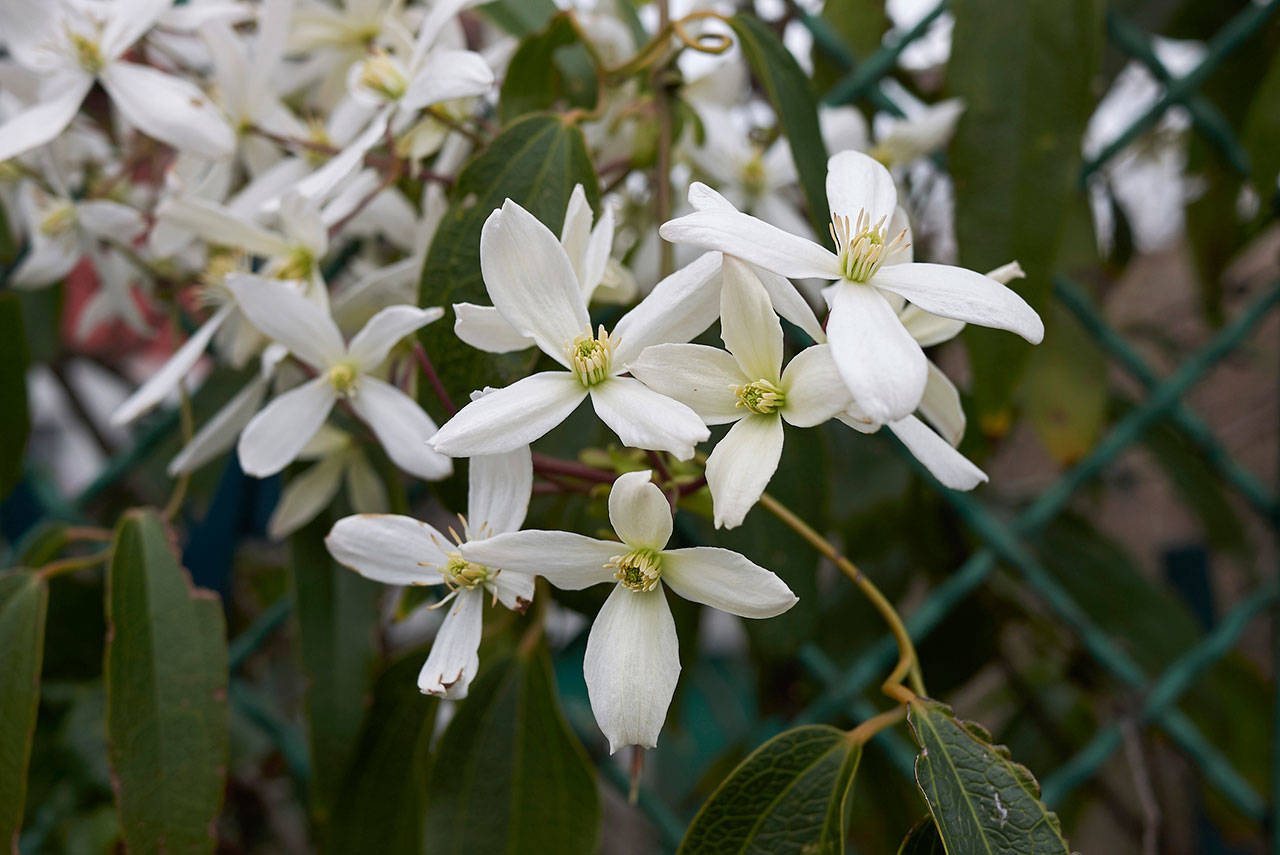Some say “kle-MA-tis,” others say “KLEM-a-tis” — I say, who cares! No matter how you pronounce it, Clematis are the queen of all vines.
Everyone who gardens should find a way to work in as many varieties as possible into their yards. Between the early-blooming Clematis armandii and the late-blooming sweet autumn Clematis, there are literally hundreds of varieties that boast anywhere from small 1-inch bell-shaped flowers to the grandiose 6-inch-across ones that come in all colors of the rainbow. How could anyone resist?
But while these vines can become garden standouts in time, it isn’t always easy to get them established. If you have gardened for awhile, then you have probably the old saying, “Heads in the sun, feet in the shade.” I used to pooh-pooh this idea and plant them all in full sun.
I once had a lovely red variety growing on a trellis in the middle of my rose garden, out on the west side of my house where it got all the afternoon sun. The vine would sprout up in the spring, grow rampantly over the trellis, bud up nicely and — just as the buds started to show some color — it would wilt and die. It drove me absolutely nuts.
After a few years of this, I removed the trellis and, frankly, forgot about the Clematis. Low and behold, in the shade of some newly planted shrubs, that very same Clematis romped 15 feet up, through my weeping giant sequoia, and bloomed its silly little head off all summer long. Two decades later, it is still going gangbusters. Cold feet, hot heads. Believe it!
Planting time and depth are two more factors that can lead to success or failure. While you generally see Clematis in garden centers when they are blooming, this is not necessarily the best time to plant them. Plants in full bloom don’t appreciate being roughed up and torn out of their containers.
Right now — just as the leaves are coming out — is the best time to plant. They will hardly skip a beat and be off to the races in no time at all. All of the varieties we carry in the nursery, now and in the future, have great picture tags to let you see the stunning blooms you will eventually get on your chosen Clematis.
Then there’s how deep to plant. While I would rarely, if ever, recommend this technique for other plants, for Clematis, if you plant them one or 2 inches deeper than they were growing in the pots, they seem to root in better and you lessen the chance of contracting Clematis wilt — that nasty disease that causes your vine to wither just about the time it is ready to bloom.
As for pruning, I could easily write an entire column solely on untangling the mysteries of pruning these amazing vines. For now, and for the sake of simplicity, follow these guidelines: Prune the spring-bloomers hard just after they flower, summer- bloomers lightly in the spring, and fall-bloomers very hard in spring just before they start to grow.
Fortunately, most new plants will come with pruning directions. But if you’re unsure, always check with a nursery professional for further clarification.
I have found that sometimes takes a season or two to get Clematis established. Hang in there and don’t give up — even if they look as dead as a doornail. If it helps, remember this little ditty: “Hot heads and cold feet / Plant them early and plant them deep.” Stay safe and keep on gardening!
Steve Smith is the owner of Sunnyside Nursery in Marysville and can be reached at sunnysidenursery@msn.com.
Two free classes
Sunnyside Nursery’s free gardening classes are online for now. A class on Japanese maples is scheduled for 10 a.m. April 24, followed by a class on colorful climbers at 11 a.m. April 25 via Zoom. With registration, you’ll receive a Zoom link to attend the online class. For more information or to sign up, visit www.sunnysidenursery.net/classes.
Talk to us
> Give us your news tips.
> Send us a letter to the editor.
> More Herald contact information.

























